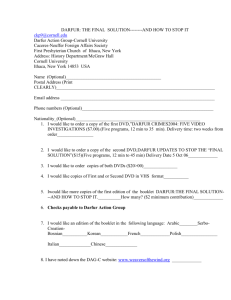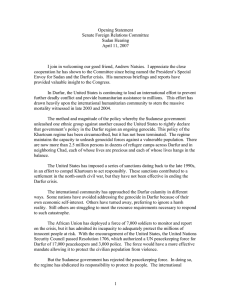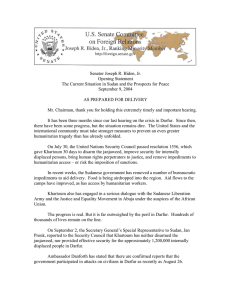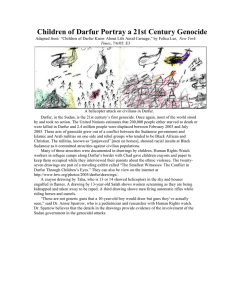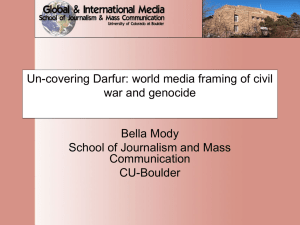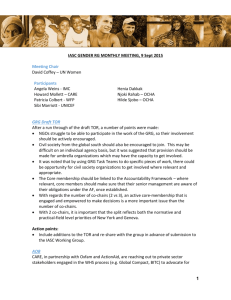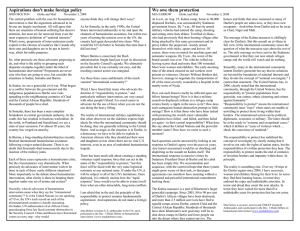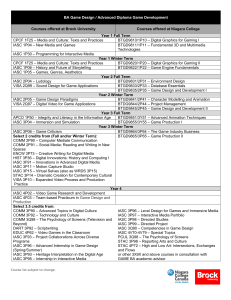What worked well …
advertisement
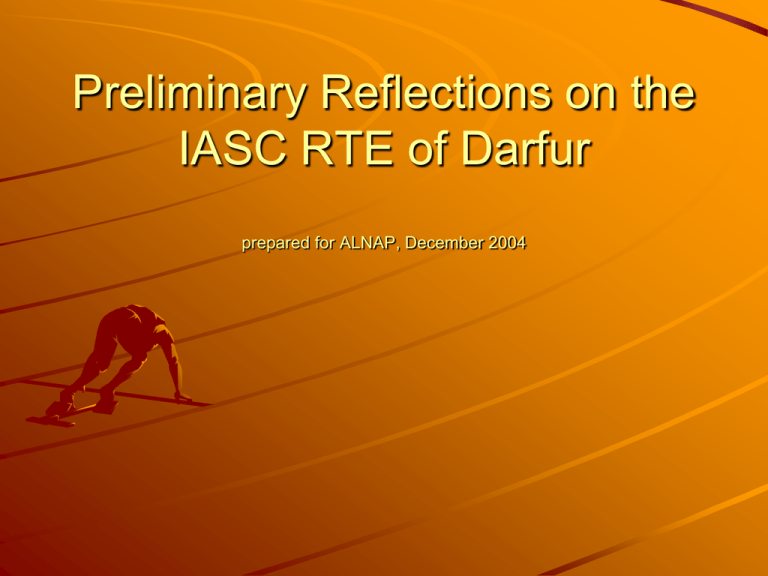
Preliminary Reflections on the IASC RTE of Darfur prepared for ALNAP, December 2004 Year Month Darfur 2003 2004 2005 Feb March April May June July Aug Sept Oct Nov Dec Jan Feb March April May June July Aug Sept Oct Nov Dec Jan Feb March April May El Fasher attack Planned Teamleader (humanit. Evaluation expert) Protection consultant OCHA evaluation staff NGO specialist Actual Teamleader Protection consultant OCHA eval staff NGO specialist 2 national consultants (mainly for Darfur field work) 1 targeting specialilst (WFP) possibly collab from UNICEF Morris mission Greater Darfur Initiative Reopening for HA SG Visit Rev. Appeal Closure HC speaks out of Darfur SC discusses Darfur 2005 Appeal ERC commissions evaluation Team selection First visit HQ & Donor capitals 2nd visit 3rd visit capital workshop IASC present. Final report Team Select. First Visit HQ & Donor capitals 2nd visit 3rd visit Field workshops IASC present. IASC present. Final report What worked well … Response to Jan Egeland’s initiative. IASC members commitment to participate came quickly Formation of core learning group (WFP, WHO, UNICEF, UNHCR, UNDP, OHCHR, UNIFEM, UNFPA, FAO, IOM, SCHR (CARE), OCHA). BUT, concept needs clearer definition and stronger anchorage with participating agencies Flexible approach. Fine-tuning, adapting to events on the ground, political realities etc. Taking time to adjust and to enhance team capacity based on first visit. Access to humanitarian actors. Despite emergency phase, quality time was provided to the team. BUT, not sufficient time with some key officials (traveling, tied up) What worked well … First visit revealed a number of areas of key concerns that applied to most agencies: timeliness of response, early warning and contingency planning, protection, gender, SGBV, difficulties to field staff, lack of good political and contextual analysis etc. Already first RTE outcome: the initial feed-back triggered a major review of humanitarian response capacity to study whether difficulties experienced in Darfur are systemic issues and need addressing BUT so far limited impact Use of a research assistant (OCHA ESU staff) Establishment and continued updating of a timeline Team dynamics: mix of external and internal with external team leader being the lead What worked well … Low key approach to first visit brought eventually stronger field buy-in BUT more is needed Observation as a key method: participation in regular programmed meeting were extremely illuminating First working paper tailored to reflect the challenges as encountered by humanitarian actors without “finger-pointing” nor backward looking. Degree of appreciation for the issues worked well with the field team. This led to acceptance of the team as part of the team there, an important step. What worked not so well … Too much time spent on the first mission to “sell concept and value-added”. Defensiveness of some actors in the field – HQ buy-in did not necessarily mean field buy in. Perception that this was another HQ attempt to micro manage Huge task – entire system. Little time to focus and need to resist temptation to focus too much on agency-specific details while not becoming too general. Convincing the field that “earlier” was better than “later” Significant resource implications. 3 staff of OCHA working on this. 2 initial consultants – too little for such a big task. What worked not so well … Not enough time allocated to work “in-between” missions. Team had to stay abreast of developments and increase engagement with core learning group. Initial budget was not sufficient to accommodate the need for additional expertise and time No final workshop as planned after the first visit. This would have helped and could have led to better and more informed dialogue at an earlier stage. Initially agreed-to schedule was not respected by the field that set different priorities – lowest in pecking order BUT adjusted schedule should work Key Challenges Striking the right balance between providing value-added for the on-going operation and providing external evaluation feed-back Any reporting quickly is out of date. Keeping abreast of changes in between missions Getting better engagement by the agencies – at HQ (core learning group) and at the field level (mini workshops) Avoid focusing on agency-specific details while not becoming too general Creating space for the evaluation Keeping the momentum and interest What to do differently next time Undertake a low key preparatory visit ahead of first RTE visit. This could be the evaluation manager alone or jointly with the already identified team leader. Visit would help develop TOR and get buy-in Consider testing method of appreciative inquiry to reduce field resistance Ensure strong research capacity throughout Plan for more team working time in between phases Develop an evaluation website that provides all relevant background info plus reports Train national consultants to spend quality time in the field while international team is not present
